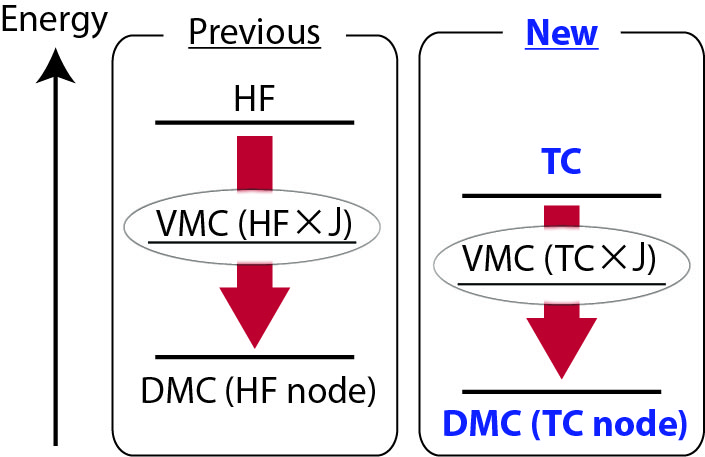 |
Japanese |
Tsuneyuki Research Group |
Research
"Diffusion Monte Carlo method using the transcorrelated trial wave function"

Diffusion Monte Carlo method (DMC) is one of the most reliable methods to treat correlated quantum systems from first principles. To simulate electron systems stably, DMC must be imposed on the fixed-node approximation. The accuracy of the fixed-node DMC depends on the quality of the nodal structure of the trial wave function.
We have studied the fixed-node DMC using the transcorrelated (TC) wave function. The TC wave function is a Slater-Jastrow wave function, in which the Slater determinant is optimized under the influence of electron correlation. Therefore the TC wave function is a promising trial wave function for the DMC simulation.
We have investigated the utility of the TC wave function in DMC by comparing the DMC total energies using various trial wave functions [1]. As a result, we found two features. First, the TC wave function with the short-range Jastrow factor, which has a general polynomial form, has a better nodal structure than the HF wave function. Second, the TC wave function with the long-range Jastrow factor, which is derived from the analysis of homogeneous electron gas, has a better nodal structure in smaller gap systems. These features would seem to indicate the utility of the transcorrelated wave function in the DMC simulation.
[1] Y. Yamamoto, R. Maezono, M. Ochi and S. Tsuneyuki, in preparation.
